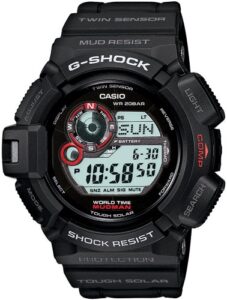That depends on what kind of timepiece we’re talking about. Alas, not all quartz is created equal.
A Little Background
The quartz movement revolutionized the watch industry beginning with the unveiling of the Seiko Astron 35SQ in December 1969. Quartz watches were cheaper to produce, had fewer moving parts, and were effortlessly more accurate. They skyrocketed in popularity, quickly eclipsing their mechanical counterparts, even the luxury lines.

Since its inception, quartz has enjoyed – for better or worse – a reputation of being inexpensive and easily replaceable. Take a look in any department store, and you’ll quickly find a plethora of no-brand or low-end brand quartz watches under $30. Your average bargain quartz generally has about 14 components – the most important being the battery, the quartz crystal, and the watch’s circuit. And while a repair may be as simple as getting your regular Timex battery replacement, if something more serious happens, it’s sometimes cheaper simply to replace the entire watch.
On the other hand, you wouldn’t necessarily want to do that if your quartz was produced by a major Swiss brand like Rolex, Tag Heuer, or Omega. Or even a more expensive Seiko. Although these models lack some of the magic and complexity of mechanical masterpieces, their components represent high-end craftsmanship and are by no means cheap.
Consider the Rolex Oysterquartz released from the 70s, the Omega Seamaster Aqua Terra Blue Dial Quartz from the late 90s, and the 80s quartz version of the Tag Heuer Pilot Chronograph Navitimer. With resale prices ranging from $2600 to more than $6000 for these vintage pieces, you can see how it makes sense to spend several hundred dollars on a watch repair rather than look for a new timepiece.
What Can Go Wrong with a Quartz?
While not nearly as labor-intensive as their mechanical counterparts, higher-quality quartz timepieces require a certain degree of cleaning and repair to function effectively. Our skilled technicians have handled just about every kind of quartz watch repair out there, and below are a few of the issues they frequently encounter:
Needs a New Battery
The most apparent reason your quartz watch has stopped working is that your battery is dead. You can fix this by removing the case back, taking out the old battery, and replacing it with a new one. Be sure not to touch the coil or other watch parts around the battery during this process. Once the battery is in, refit the gasket and put the case back on. Most quartz watches need a battery replacement every two to five years.
Sometimes, the clamps holding the battery in the movement can make the replacement more tricky. Or you may have trouble getting the gasket back in place. If at any point you don’t feel comfortable working with your watch, a good idea is to consult a professional watch repair service.
Dirt in the movement
If your Omega quartz is suddenly losing time, there could be minute traces of oil or dirt embedded in the gears or elsewhere in the movement. Although rare, quartz timepieces do have small gears that can sometimes freeze up on you, stopping your watch. In these situations, we recommend contacting a qualified professional before tinkering around inside the movement.
Battery Leakage and Corrosion
We all hate that moment when we open our watch case only to find that we have left the battery too long, and now we have a mess to clean up. A leaking battery can do irreparable damage to a movement, so be sure and check the battery every so often to make certain things look good.
Hopefully, a good clean will get your timepiece running again. Once you remove that old battery, you can take a thin cotton swab and some rubbing alcohol and gently clean the terminals and any other areas where you see corrosion. If your watch starts ticking once you have a new battery in place, you managed to save your movement. Hallelujah!
If not, it may be a good idea to enlist your favorite Rolex watch repair guru and start looking for a new movement for your Oysterquartz.
Quartz Coil Breaks
When your coil breaks down, it won’t be able to power the step motor, and your watch will stop. More often than not, this happens when you’re changing the battery. You may slip and bang the coil when opening the case back or pulling the battery out with tweezers. Electric shock can also short-circuit the coil, but that’s pretty rare.
You may be able to replace just the coil if the rest of the movement is working well. It will depend on how much damage was done to the coil. When you start having to replace high-end quartz parts such as coils circuits, gears or other items, your costs for labor and parts tend to add up quickly.
In addition, most of your average jewelers really don’t know what to do with a vintage quartz timepiece other than to clean it and change the battery, as many of these watches have parts that are discontinued or extremely hard to find.
If your Seamaster quartz is having issues, it’s critical to enlist an Omega watch repair service you can trust to turn over every stone until they find you the right replacement parts to provide a quality fix. Once your vintage timepiece is up and running again, these genuine components should keep it in tip-top shape for several years.
You absolutely can and should repair a quartz watch, and honestly, you’re better off fixing and keeping your original if it carries a tried-and-true Swiss name, happens to be a top-of-the-line Seiko, or simply holds a tremendous amount of sentimental value.





